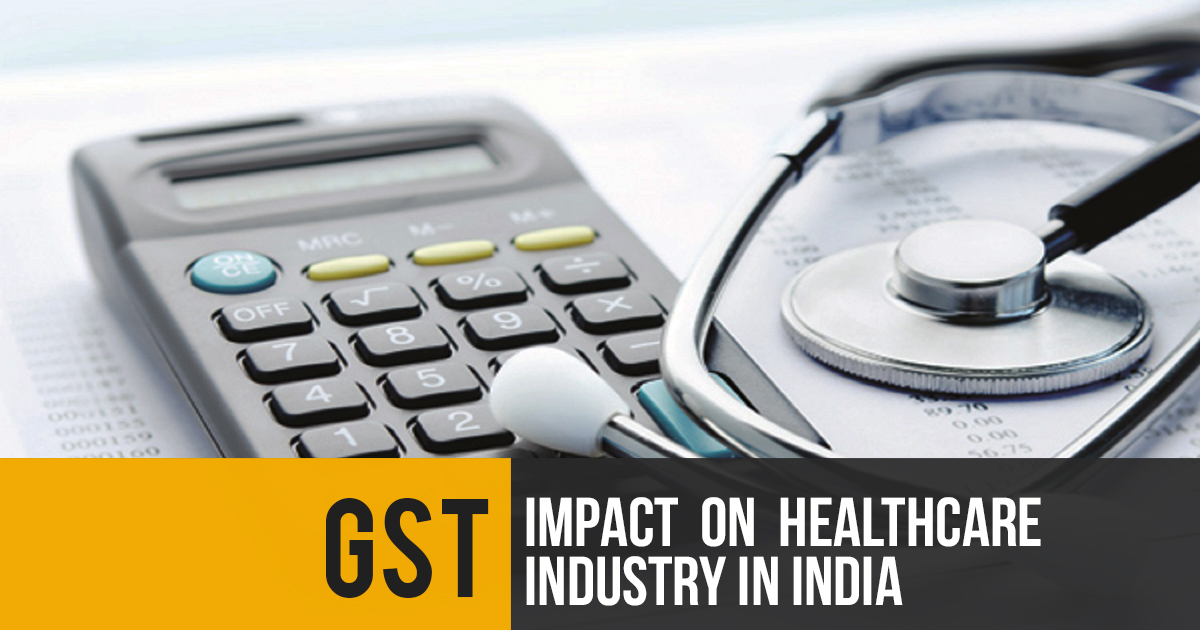
Goods and services tax is a major factor that has the potential to cover the economic base of the country, along with its sidelines. Additionally, India is not just one of the biggest performing nations for generics, but is also experiencing a blast in remedial tourism, which creates extra returns for the Healthcare Industry.
India’s Pharmaceutical Industry, as of now, is the 3rd largest as far as volume and 14th regarding esteem. As the populace is persistently developing, so is the requirement for good Healthcare Services, which brings the need for growing more qualified personnel to fill the present crevice in part and provide state-of-the-art services and innovations to patients.
Revised Hospital Room Rent with GST Tax Slabs
| Room Type | Hospital Room Rent | New GST Rate from 22nd September 2025 | GST ITC |
|---|---|---|---|
| Non-ICU Rooms | ₹7,500 or less | 5% | Not applicable |
| Non-ICU Rooms | Above ₹7,500 | 18% | Available |
| ICU/CCU/ICCU/NICU | Any amount | 0% | Not applicable |
The final GST rates have been disclosed and include numerous categories from a wide range of healthcare amenities.
| New GST Rate from 22nd September 2025 | Healthcare Commodities |
|---|---|
| 5% | Contraceptives |
| 0% | Human Blood |
| 0% | Human or Animal Blood Vaccines |
| 5% | Ayurvedic Medicines, Medicinal Grade Hydrogen Peroxide, Anaesthetics, Potassium Iodate, Iodine, Steam, Glands And Other Organs For Organo-Therapeutic Uses, Ayurvedic, Unani, Homoeopathic Siddha Or Biochemical Systems Medicaments, Sterile Suture |
| 5% | Tampons, Disinfectants |
GST Rate on Medical Equipment
| Device | HSN Code | New GST Rate from 22nd September 2025 |
|---|---|---|
| Blood Glucose Monitoring System (Glucometer) + Test Strips | 9027 | 5% |
| BP Machine (Sphygmomanometer) | 9018 | 5% |
| ECG Machine | 9018 | 5% |
| Ultrasound Equipment / Scanners | 9018 | 5% |
| X-Ray, CT Scan, MRI Machines | 9022 | 5% |
| Surgical Instruments, Needles, Syringes | 9018 | 5% |
| Bandages, Gauze, Wadding & Surgical Dressings | 3005 | 5% |
| Medical Grade Oxygen | 2804 | 5% |
| Clinical & Digital Thermometers | 9025 | 5% |
| Defibrillators (Life Support Equipment) | 9018 | 5% |
| Stethoscope | 9018 | 5% |
| Endoscopes / Diagnostic Scopes | 9018 | 5% |
| Anesthesia Machines | 9018 | 5% |
These healthcare products are also in the List of Expensive Categories
| Items | New GST Rate from 22nd September 2025 |
|---|---|
| Surgical Item | 5% |
| Wheel Chair | 5% |
In the present scenario, 17 items are in the negative list where no service tax is to be charged. Also, nearly 60 services, such as pilgrimage, health care, education, skill development, and journalistic activities, are exempt from service tax and are not subject to sudden taxation.
In India, on health, there is expenditure of 5% of the GDP, and 4% has arrived from the private sector. The healthcare industry in India has been developing effectively, and the focus of the Ministry of Health is to advance 50 innovations this year to treat ailments like cancer and tuberculosis.
The government raised the FDI limit to draw more foreign direct investment (FDI) for brownfield pharmaceutical investments, 74% in June. There is an authorisation of 100% FDI from Greenfield Pharmaceutical Investments, and brownfield investments beyond 74% need government approval.
Recommended: Easy Guide to the Reverse Charge Mechanism Under GST with All Aspects
The rollout of the Goods and Services Tax (GST) has drawn attention from businesses in India. GST consolidates multiple state and central taxes into a single tax system, facilitating compliance and helping several sectors, including healthcare and pharmaceuticals.
In the context of employment and revenue, the healthcare industry in India is one of the biggest sectors. GST cannot affect the pharma sector as it facilitates a tax structure, consolidating eight different taxes into a single levy.
The same enhances efficiency in supply chains, which can add 2% to India’s pharmaceutical market size. Pharmaceutical companies are reevaluating their distribution strategies to take advantage of the new GST framework.
Read Also: Meaning of SGST, IGST, CGST with Input Tax Credit Adjustment
Also, GST execution permits easier input tax credit flow, enhances compliance, and levels the playing field for pharmaceutical organisations. The removal of the Central Sales Tax (CST), lower inter-state transaction costs, and lesser manufacturing and distribution costs by 2% is the main benefit that translates to more than 20% benefit on profitability.
Earlier, companies kept warehouses in distinct states to prevent CST. Companies with GST subsuming CST can consolidate stock at strategic locations while paying Integrated GST (IGST) on inter-state supplies, enhancing operational efficiency.
Treatment Cost Before and After 56th GST Council Updates
The tax rates on medical equipment and supplies were rationalised post-56th GST Council Meeting.
- Dialysis devices, needles, catheters, plasma filters, tubing, and dialysis fluid have now been charged with 5% GST, decreased from the earlier 12%
- Blood carry bags 5% GST (earlier 12%)
- Platelet carry bags 5% GST (earlier 12%)
- HB kits 5% GST (earlier 18%)
- Pacemakers Lead valves draw 5% GST (earlier 18%), while CRT-ICD devices are levied at 5% (earlier 12%)
- Tracer tapes and bandages 5% GST (earlier 12%)
- Blood-related supplies human blood, vaccines, and blood components, are exempt (0%)
- Glass slides and test tubes 5% GST (earlier 18%)
Hence, the 56th GST Council meeting rationalised rates, which lessened the tax burden on life-saving medicines, medical devices, and blood-related supplies.